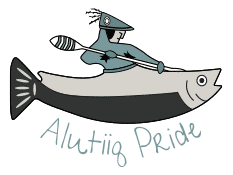LOWER COOK INLET
MOOSE COMPOSITION
Projects & Studies
Subsistence Alliance
Traditional
Foods Project
Migratory Bird
Project
Nanwalek Salmon
Enhancement Project
Lower Cook Inlet
Moose Composition
Bat Sonar
Study
Lower Cook
Inlet Moose
Composition Study
Moose in the Lower Cook Inlet are an important food security staple to Port Graham and Nanwalek. Over the past several years, Port Graham and Nanwalek Tribal Members have expressed concern about moose populations, including species health, impacts of changing environmental/climate conditions, and resource competition/interference with commercial and subsistence fisheries and how that affects their subsistence use of moose. The Alaska Department of Fish and Game (ADF&G) conducted moose counts in 2011, 2015, and 2017, and results ranged from 10 to 48, which represents minimum counts in the area. Directed by our member Tribes and funding from a Tribal Wildlife Grant through the US Fish and Wildlife Service, CRRC will be assisting in accessing the moose populations of the Lower Cook Inlet area for Tribal customary and traditional uses.
CRRC will be working
to accomplish these
goals to enhance moose
stewardship in the
Lower Cook Inlet:

Build capacity toward Tribal self-sufficiency in resource management.
Update population and composition estimate data of moose in the Lower Cook Inlet.
Complete ethnographic interviews with technical
assistance from Alaska Department of Fish and Game’s Subsistence Division. CRRC staff will participate in a training workshop focused on collecting Traditional Ecological Knowledge (TEK). The range of TEK collected from participants will contextualize historical changes in moose harvest and observations (e.g., distribution, abundance, health, diet, behaviors) as well as environmental/climate conditions, changes, and phenomena over time. Completion of the surveys will bridge a ten-year gap for subsistence data collected in the region.
Conservation of the moose population in the Lower Cook Inlet and their habitat.
Address Tribal concerns over moose data gaps in the Lower Cook Inlet by investigating the gaps and updating the information necessary for the Alaska Department of Fish and Game to manage the moose population.

Aerial Surveying
Currently, CRRC is planning to conduct aerial surveys to collect moose composition data in the major drainages of the Lower Cook Inlet and share the data with the Alaska Department of Fish and Game to be used in management and harvest regulation decisions. CRRC will also consult with ADF&G to come up with other noninvasive methods for monitoring the moose population and develop a program based on the best option for the region. CRRC and ADF&G will also carry out focus group interviews with residents to conduct ethnographic surveys on the historical harvest of moose in the region.


